Death Of A Star By A Supernova Explosion,






death of a star by a supernova explosion,
and the birth of a black hole
More Posts from Evisno and Others






Theories about the Origins of Space and Time. 1. Gravity as Thermodynamics Entropic gravity is a theory in modern physics that describes gravity as an entropic force - not a fundamental interaction mediated by a quantum field theory and a gauge particle, but a consequence of physical systems’ tendency to increase their entropy. 2. Loop Quantum Gravity According to Einstein, gravity is not a force – it is a property of space-time itself. Loop quantum gravity is an attempt to develop a quantum theory of gravity based directly on Einstein’s geometrical formulation. The main output of the theory is a physical picture of space where space is granular. More precisely, space can be viewed as an extremely fine fabric or network “woven” of finite loops. These networks of loops are called spin networks. The evolution of a spin network over time is called a spin foam. The predicted size of this structure is the Planck length, which is approximately 10−35 meters. According to the theory, there is no meaning to distance at scales smaller than the Planck scale. Therefore, LQG predicts that not just matter, but space itself, has an atomic structure. 3. Causal Sets Its founding principles are that spacetime is fundamentally discrete and that spacetime events are related by a partial order. The theory postulates that the building blocks of space-time are simple mathematical points that are connected by links, with each link pointing from past to future. Such a link is a bare-bones representation of causality, meaning that an earlier point can affect a later one, but not vice versa. The resulting network is like a growing tree that gradually builds up into space-time. 4. Causal Dynamical Triangulations The idea is to approximate the unknown fundamental constituents with tiny chunks of ordinary space-time caught up in a roiling sea of quantum fluctuations, and to follow how these chunks spontaneously glue themselves together into larger structures. The space-time building blocks were simple hyper-pyramids (four-dimensional counterparts to three-dimensional tetrahedrons) and the simulation’s gluing rules allowed them to combine freely. The result was a series of bizarre ‘universes’ that had far too many dimensions (or too few), and that folded back on themselves or broke into pieces. 5. Holography In this model, the three-dimensional interior of the universe contains strings and black holes governed only by gravity, whereas its two-dimensional boundary contains elementary particles and fields that obey ordinary quantum laws without gravity. Hypothetical residents of the three-dimensional space would never see this boundary, because it would be infinitely far away. But that does not affect the mathematics: anything happening in the three-dimensional universe can be described equally well by equations in the two-dimensional boundary, and vice versa.



All the times science fiction became fact
I don’t usually go for these really-big-ads-disguised-as-infographics (Really? Sci-fi ink & toner?), but this one was too cool to pass up.
Unfortunately, no hoverboards yet. But we’ve still got 15 months before time runs out on that one:
Bonus: Why are some science fiction authors so good at predicting the future? Check out this episode of It’s Okay To Be Smart where I talk all about that:
(via io9)





Nearly every day Cassini sends back something amazing to sit and wonder at.
1) Saturn’s rings, 15 July 2014
2) Tethys / Saturn’s rings 14 July 2014
3) Disk of Saturn 14 July 2014
4) Prometheus / F Ring 13 July 2014
5) Pan in the Encke Gap 13 July 2014
All raw and unprocessed images from saturn.jpl.nasa.gov
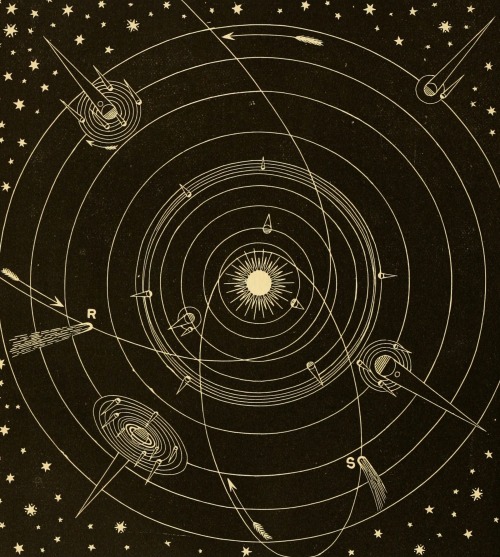
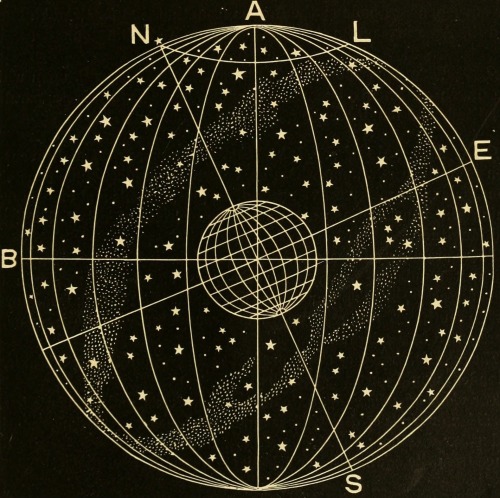
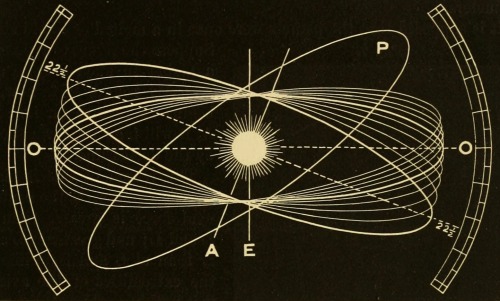
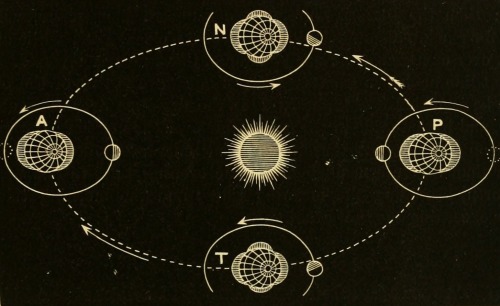
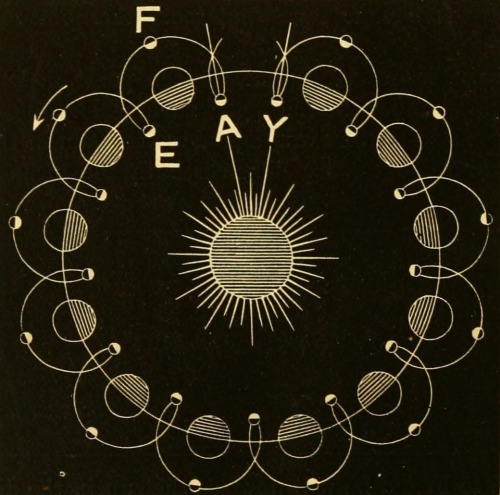
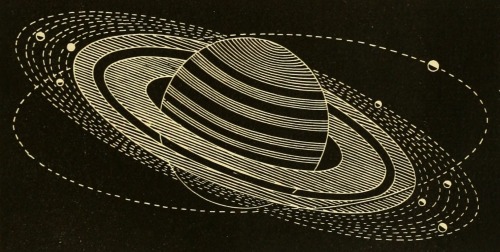
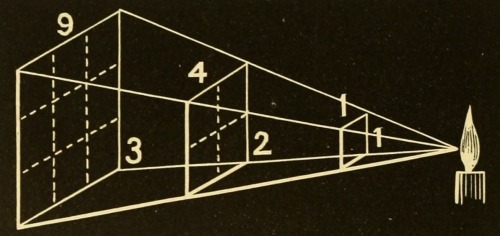
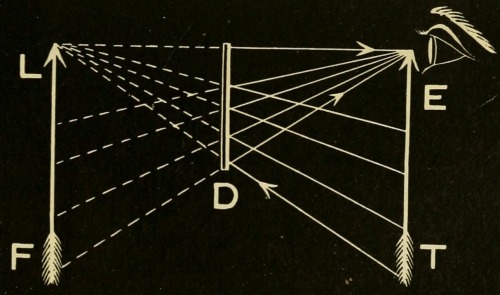
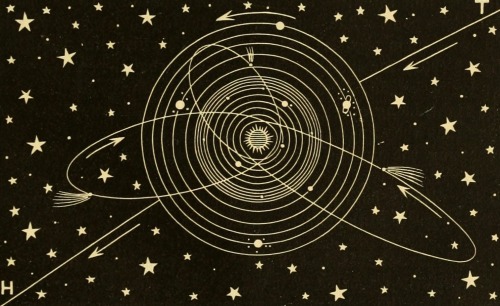
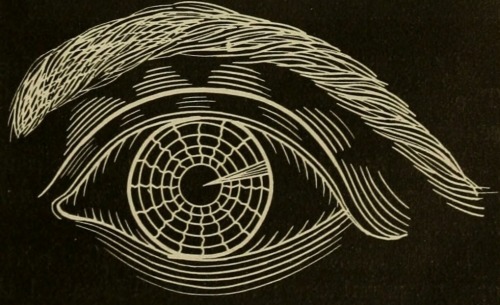
Frank G. Johnson. Solar System, Celestial and Terrestrial Latitude, The Ecliptic, Spring and Neap Tides, The Moon’s Path Around the Sun, Saturn’s Rings, Intensity of Light at Different Distances, The Optics of Plane Mirrors, The Orbit of the Sun, Method of Adjusting the Pupil or Aperture of the Eye. Johnson’s Natural Philosophy, and Key to Philosophical Charts. 1872.




Jupiter’s Galilean Moons
Io - Jupiter’s volcanic moon
Europa - Jupiter’s icy moon
Ganymede - Jupiter’s (and the solar system’s) largest moon
Callisto - Jupiter’s heavily cratered moon
Made using: Celestia, Screen2Gif & GIMP Based on: @spaceplasma‘s solar system gifs Profile sources: http://solarsystem.nasa.gov/planets, http://nssdc.gsfc.nasa.gov/planetary/factsheet/joviansatfact.html










Ask Ethan: How Do We Know The Universe Is 13.8 Billion Years Old?
“You’ve heard the story before: the Universe began with the Big Bang 13.8 billion years ago, and formed atoms, stars, galaxies, and eventually planets with the right ingredients for life. Looking at distant locations in the Universe is also looking back in time, and somehow, through the power of physics and astronomy, we’ve figured out not only how the Universe began, but its age. But how do we know how old the Universe is? That what Thys Hauptfleisch wants to know for this week’s Ask Ethan:
Ethan, how was the 13.8 billion years calculated? (In English please!)”
There’s a unique relationship between everything that exists in the Universe today – the stars and galaxies, the large-scale structure, the leftover glow from the Big Bang, the expansion rate, etc. – and the amount of time that’s passed since it all began. When it comes to our Universe, there really was a day without a yesterday, but how do we know exactly how much time has passed between then and now? There are two ways: one complex and one simple. The complex way is to determine all the matter and energy components making up the Universe, to measure how the Universe has expanded over the entirety of its cosmic history, and then, in the context of the Big Bang, to deduce how old the Universe must be. The other is to understand stars, measure them, and determine how old the oldest ones are.
The complex answer is more accurate, but more importantly, they both agree with each other. Get the details on this week’s Ask Ethan!
Solar System: Things to Know This Week
Learn the latest on Cassini’s Grand Finale, Pluto, Hubble Space Telescope and the Red Planet.
1. Cassini’s Grand Finale

After more than 12 years at Saturn, our Cassini mission has entered the final year of its epic voyage to the giant planet and its family of moons. But the journey isn’t over. The upcoming months will be like a whole new mission, with lots of new science and a truly thrilling ride in the unexplored space near the rings. Later this year, the spacecraft will fly repeatedly just outside the rings, capturing the closest views ever. Then, it will actually orbit inside the gap between the rings and the planet’s cloud tops.
Get details on Cassini’s final mission
The von Kármán Lecture Series: 2016
2. Chandra X-Rays Pluto

As the New Horizon’s mission headed to Pluto, our Chandra X-Ray Observatory made the first detection of the planet in X-rays. Chandra’s observations offer new insight into the space environment surrounding the largest and best-known object in the solar system’s outermost regions.
See Pluto’s X-Ray
3. … And Then Pluto Painted the Town Red

When the cameras on our approaching New Horizons spacecraft first spotted the large reddish polar region on Pluto’s largest moon, Charon, mission scientists knew two things: they’d never seen anything like it before, and they couldn’t wait to get the story behind it. After analyzing the images and other data that New Horizons has sent back from its July 2015 flight through the Pluto system, scientists think they’ve solved the mystery. Charon’s polar coloring comes from Pluto itself—as methane gas that escapes from Pluto’s atmosphere and becomes trapped by the moon’s gravity and freezes to the cold, icy surface at Charon’s pole.
Get the details
4. Pretty as a Postcard

The famed red-rock deserts of the American Southwest and recent images of Mars bear a striking similarity. New color images returned by our Curiosity Mars rover reveal the layered geologic past of the Red Planet in stunning detail.
More images
5. Things Fall Apart

Our Hubble Space Telescope recently observed a comet breaking apart. In a series of images taken over a three-day span in January 2016, Hubble captured images of 25 building-size blocks made of a mixture of ice and dust drifting away from the comet. The resulting debris is now scattered along a 3,000-mile-long trail, larger than the width of the continental U.S.
Learn more
Discover the full list of 10 things to know about our solar system this week HERE.
Make sure to follow us on Tumblr for your regular dose of space: http://nasa.tumblr.com
Look Up! Perseid Meteor Shower Peaks Aug. 11-12
Asteroid Watch logo. Aug. 2, 2016 Make plans now to stay up late or set the alarm early next week to see a cosmic display of “shooting stars” light up the night sky. Known for it’s fast and bright meteors, the annual Perseid meteor shower is anticipated to be one of the best potential meteor viewing opportunities this year. The Perseids show up every year in August when Earth ventures through trails of debris left behind by an ancient comet. This year, Earth may be in for a closer encounter than usual with the comet trails that result in meteor shower, setting the stage for a spectacular display.
Image above: An outburst of Perseid meteors lights up the sky in August 2009 in this time-lapse image. Stargazers expect a similar outburst during next week’s Perseid meteor shower, which will be visible overnight on Aug. 11 and 12. Image Credits: NASA/JPL. “Forecasters are predicting a Perseid outburst this year with double normal rates on the night of Aug. 11-12,” said Bill Cooke with NASA’s Meteoroid Environments Office in Huntsville, Alabama. “Under perfect conditions, rates could soar to 200 meteors per hour.” An outburst is a meteor shower with more meteors than usual. The last Perseid outburst occurred in 2009. Every Perseid meteor is a tiny piece of the comet Swift-Tuttle, which orbits the sun every 133 years. Each swing through the inner solar system can leave trillions of small particles in its wake. When Earth crosses paths with Swift-Tuttle’s debris, specks of comet-stuff hit Earth’s atmosphere and disintegrate in flashes of light. These meteors are called Perseids because they seem to fly out of the constellation Perseus. Most years, Earth might graze the edge of Swift-Tuttle’s debris stream, where there’s less activity. Occasionally, though, Jupiter’s gravity tugs the huge network of dust trails closer, and Earth plows through closer to the middle, where there’s more material. This may be one of those years. Experts at NASA and elsewhere agree that three or more streams are on a collision course with Earth. “Here’s something to think about. The meteors you’ll see this year are from comet flybys that occurred hundreds if not thousands of years ago,” said Cooke. “And they’ve traveled billions of miles before their kamikaze run into Earth’s atmosphere.” How to Watch the Perseids The best way to see the Perseids is to go outside between midnight and dawn on the morning of Aug. 12. Allow about 45 minutes for your eyes to adjust to the dark. Lie on your back and look straight up. Increased activity may also be seen on Aug. 12-13. For stargazers experiencing cloudy or light-polluted skies, a live broadcast of the Perseid meteor shower will be available via Ustream overnight on Aug. 11-12 and Aug. 13-14, beginning at 10 p.m. EDT.: http://www.ustream.tv/channel/nasa-msfc
Meteor Moment: Viewing Tips.
More about the Perseids Perseid meteors travel at the blistering speed of 132,000 miles per hour (59 kilometers per second). That’s 500 times faster than the fastest car in the world. At that speed, even a smidgen of dust makes a vivid streak of light when it collides with Earth’s atmosphere. Peak temperatures can reach anywhere from 3,000 to 10,000 degrees Fahrenheit as they speed across the sky. The Perseids pose no danger to Earth. Most burn up 50 miles above our planet. But an outburst could mean trouble for spacecraft. About the Meteoroid Environment Office It’s Cooke’s job to help NASA understand and prepare for risks posed by meteoroids. He leads a team of meteor experts in the Meteoroid Environments Office at NASA’s Marshall Space Flight Center. They study meteoroids in space so that NASA can protect our nation’s satellites, spacecraft and even astronauts aboard the International Space Station from these bits of tiny space debris. Related links: Meteors & Meteorites: http://www.nasa.gov/topics/solarsystem/features/watchtheskies/index.html Meteoroid Environments Office: https://www.nasa.gov/offices/meo/home/index.html Image (mentioned), Video, Text, Credits: NASA/Jennifer Harbaugh. Greetings, Orbiter.ch Full article








5 Vital Lessons Scientists Learn That Can Better Everyone’s Life
“4. Following your intuition will never get you as far as doing the math will. Coming up with a beautiful, powerful and compelling theory is the dream of many scientists worldwide, and has been for as long as there have been scientists. When Copernicus put forth his heliocentric model, it was attractive to many, but his circular orbits couldn’t explain the observations of the planets as well as Ptolemy’s epicycles – ugly as they were – did. Some 50 years later, Johannes Kepler built upon Copernicus’ idea and put forth his Mysterium Cosmographicum: a series of nested spheres whose ratios could explain the orbits of the planets. Except, the data didn’t fit right. When he did the math, the numbers didn’t add up.”
There are a lot of myths we have in our society about how the greatest of all scientific advances happened. We think about a lone genius, working outside the constraints of mainstream academia or mainstream thinking, working on something no one else works on. That hasn’t ever really been true, and yet there are actual lessons – valuable ones – to be learned from observing scientists throughout history. The greatest breakthroughs can only happen in the context of what’s already been discovered, and in that sense, our scientific knowledge base and our best new theories are a reflection of the very human endeavor of science. When Newton claimed he was standing on the shoulders of giants, it may have been his most brilliant realization of all, and it’s never been more true today.
Come learn these five vital lessons for yourself, and see if you can’t find some way to have them apply to your life!

-
 lori0268 liked this · 10 years ago
lori0268 liked this · 10 years ago -
 itriforce reblogged this · 10 years ago
itriforce reblogged this · 10 years ago -
 gee-pattinson reblogged this · 10 years ago
gee-pattinson reblogged this · 10 years ago -
 ftoom110 reblogged this · 10 years ago
ftoom110 reblogged this · 10 years ago -
 r-dig-ah-wee12 reblogged this · 10 years ago
r-dig-ah-wee12 reblogged this · 10 years ago -
 gardengarden liked this · 10 years ago
gardengarden liked this · 10 years ago -
 stylinsonfeber liked this · 10 years ago
stylinsonfeber liked this · 10 years ago -
 rfc1963 reblogged this · 10 years ago
rfc1963 reblogged this · 10 years ago -
 rfc1963 liked this · 10 years ago
rfc1963 liked this · 10 years ago -
 realkaze liked this · 10 years ago
realkaze liked this · 10 years ago -
 3asha reblogged this · 10 years ago
3asha reblogged this · 10 years ago -
 holymare reblogged this · 10 years ago
holymare reblogged this · 10 years ago -
 madd-eye reblogged this · 10 years ago
madd-eye reblogged this · 10 years ago -
 pithobbit reblogged this · 10 years ago
pithobbit reblogged this · 10 years ago -
 pithobbit liked this · 10 years ago
pithobbit liked this · 10 years ago -
 singhallelujahh reblogged this · 10 years ago
singhallelujahh reblogged this · 10 years ago -
 awesomekelko liked this · 10 years ago
awesomekelko liked this · 10 years ago -
 xlets-get-nakedx liked this · 10 years ago
xlets-get-nakedx liked this · 10 years ago -
 thriftingsouls liked this · 10 years ago
thriftingsouls liked this · 10 years ago -
 darkking0 reblogged this · 10 years ago
darkking0 reblogged this · 10 years ago -
 darkking0 liked this · 10 years ago
darkking0 liked this · 10 years ago -
 whenthepoppiesareblooming reblogged this · 10 years ago
whenthepoppiesareblooming reblogged this · 10 years ago -
 whenthepoppiesareblooming liked this · 10 years ago
whenthepoppiesareblooming liked this · 10 years ago -
 buddhxxx reblogged this · 10 years ago
buddhxxx reblogged this · 10 years ago -
 galaxialerrors reblogged this · 10 years ago
galaxialerrors reblogged this · 10 years ago -
 redpoof reblogged this · 10 years ago
redpoof reblogged this · 10 years ago -
 redpoof liked this · 10 years ago
redpoof liked this · 10 years ago -
 startrekkerz reblogged this · 10 years ago
startrekkerz reblogged this · 10 years ago -
 luimartins liked this · 10 years ago
luimartins liked this · 10 years ago -
 forgiving-and-forgetting-me reblogged this · 10 years ago
forgiving-and-forgetting-me reblogged this · 10 years ago -
 ladyarabell liked this · 10 years ago
ladyarabell liked this · 10 years ago -
 xenithtresk reblogged this · 10 years ago
xenithtresk reblogged this · 10 years ago -
 jdunnsterr liked this · 10 years ago
jdunnsterr liked this · 10 years ago